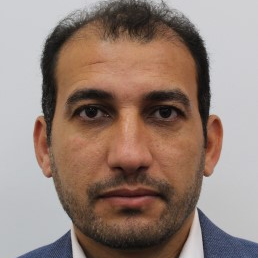Mooring Systems of Floating Offshore Structures for Emerging Industries
A special issue of Journal of Marine Science and Engineering (ISSN 2077-1312). This special issue belongs to the section "Marine Environmental Science".
Deadline for manuscript submissions: closed (31 August 2022) | Viewed by 15709
Special Issue Editors
Interests: offshore renewable energy structures (wind and wave); computational fluid dynamics; flow in porous media; wave-induced loads on offshore platforms and ships; risk and safety assessment of marine and mechanical systems
Special Issues, Collections and Topics in MDPI journals
Interests: maritime hydrodynamics; floating offshore structure motion responses; mooring line and flexible riser system design; manoeuvring of surface and underwater vehicles
Special Issue Information
Dear Colleagues,
Current offshore renewable energy (e.g., wind, waves, and tidal energy) and aquaculture (e.g., fish, seaweed, and mussel farming) practices require large structures to be installed offshore. Floating structures such as semisubmersibles, SPARs, TLPs, barges, and ship-shaped platforms can be feasible options for commercial developments in deep-water locations where fixed-bottom structures become uneconomical in such emerging industries. A key element of these floating structures is the mooring system, which is the subject covered in this Special Issue. Moorings can significantly affect rigid body motions and, in turn, the performance of a floating system and are solely responsible for station-keeping during extreme weather events. Accurately assessing a structure’s dynamics and mooring responses in operational and survivable conditions is critical when developing a new technology that can consistently produce sustainable energy/seafood or other products across a wide range of conditions yet mitigate the risk associated with a severe storm. Recent accidents due to extreme weather events have highlighted the risk that improper design of these structures and/or mooring systems can have on the structure’s integrity and the marine environment.
This Special Issue aims at bridging the knowledge transition between offshore oil and gas and other emerging industries for reliable and sustainable mooring design and analysis of floating offshore renewable energy and aquaculture structures.
Dr. Nagi AbdussamieProf. Shuhong Chai
Guest Editors
Manuscript Submission Information
Manuscripts should be submitted online at www.mdpi.com by registering and logging in to this website. Once you are registered, click here to go to the submission form. Manuscripts can be submitted until the deadline. All submissions that pass pre-check are peer-reviewed. Accepted papers will be published continuously in the journal (as soon as accepted) and will be listed together on the special issue website. Research articles, review articles as well as short communications are invited. For planned papers, a title and short abstract (about 100 words) can be sent to the Editorial Office for announcement on this website.
Submitted manuscripts should not have been published previously, nor be under consideration for publication elsewhere (except conference proceedings papers). All manuscripts are thoroughly refereed through a single-blind peer-review process. A guide for authors and other relevant information for submission of manuscripts is available on the Instructions for Authors page. Journal of Marine Science and Engineering is an international peer-reviewed open access monthly journal published by MDPI.
Please visit the Instructions for Authors page before submitting a manuscript. The Article Processing Charge (APC) for publication in this open access journal is 2600 CHF (Swiss Francs). Submitted papers should be well formatted and use good English. Authors may use MDPI's English editing service prior to publication or during author revisions.
Keywords
- Theoretical developments in mooring design, analysis, and optimization
- Numerical simulations for moorings
- Model tests for moorings
- Mooring fatigue analysis
- TLP: ringing and springing
- Anchor selection for mooring design
- Mooring materials
- Mooring installation techniques
- Mooring inspection and monitoring techniques
- Mooring reliability and integrity management






